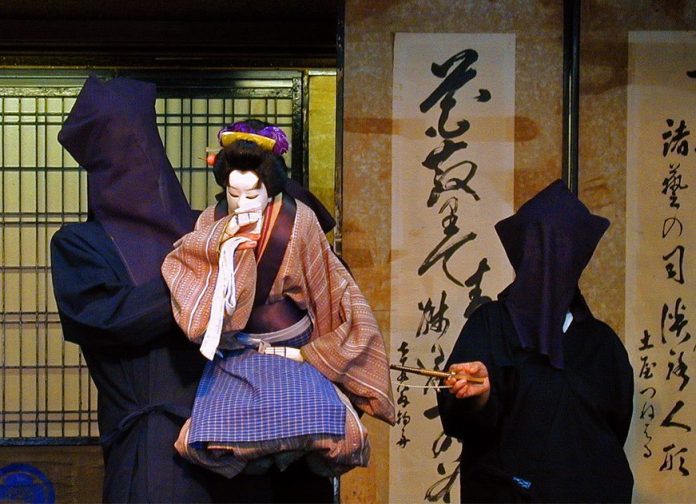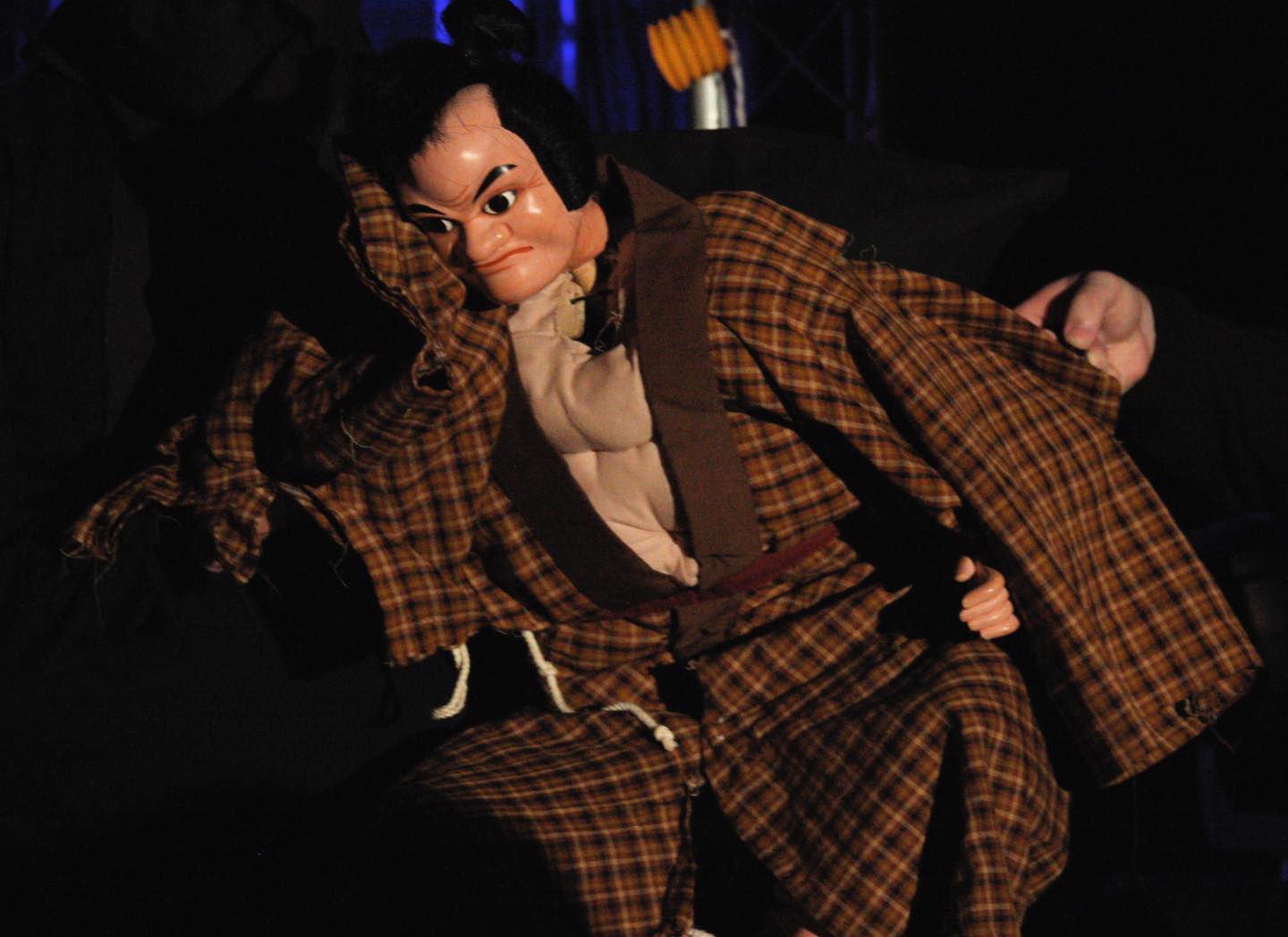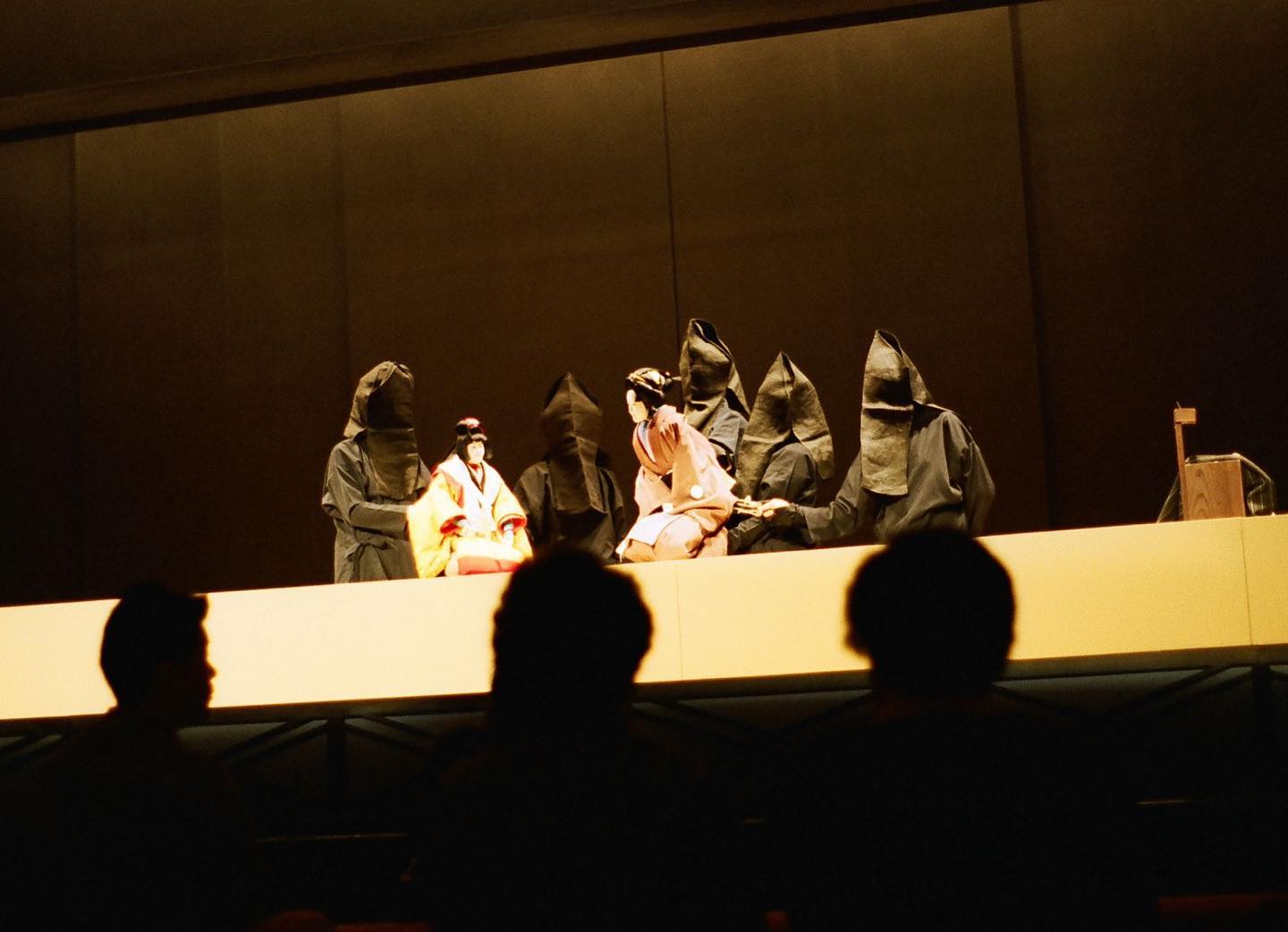
Ningyo joruri bunraku is one of Japan’s representative traditional performing arts, a comprehensive art form that combines tayu (chanters), shamisen, and puppets.

The puppets themselves are about one-half to two-thirds life-size and have several components: wooden head, shoulder board, trunk, arms, legs, and costume. The head has a grip with control strings to move the eyes, mouth, and eyebrows. This grip is inserted into a hole in the center of the shoulder board. Arms and legs are hung from the shoulder board with strings, and the costume fits over the shoulder board and trunk, from which a bamboo hoop is hung to form the hips. Female puppets often have immovable faces, and, since their long kimono completely cover the lower half of their bodies, most do not need to have legs.
There are about 70 different puppet heads in use which represent various categories, such as young unmarried woman or young man of great strength, each head is usually used for a number of different characters. The puppeteers called “omozukai” (or principal operator), “hidarizukai” (first assistant), and “ashizukai” (second assistant), manipulate the head, arms and lower body respectively with the second assistant stamping their feet for sound effects and to punctuate the shamisen rhythm.

For his part, the shamisen player accompanies the chanter and sets the pace of the play as well.
With roots in Japan’s Heian period (794–1185) Bunraku became a popular art form during the Edo era together with Kabuki. Though it eventually weaned in popularity in comparison to Kabuki, today there are fans of the art across the globe and Bunraku performances are still continue at national and historical theatres in Japan.
On your next visit to Japan, why not visit a Bunraku performance!
First image credits @ autan via Flickr under CC BY-NC-ND 2.0 DEED Second image credits @ Keith Roberts via Flickr under CC BY-NC-SA 2.0 DEED Third image credits @ Michael Daines via Flickr under CC BY-NC-SA 2.0 DEED
Japanese arts article brought to you by Consulate General Japan in Miami.











